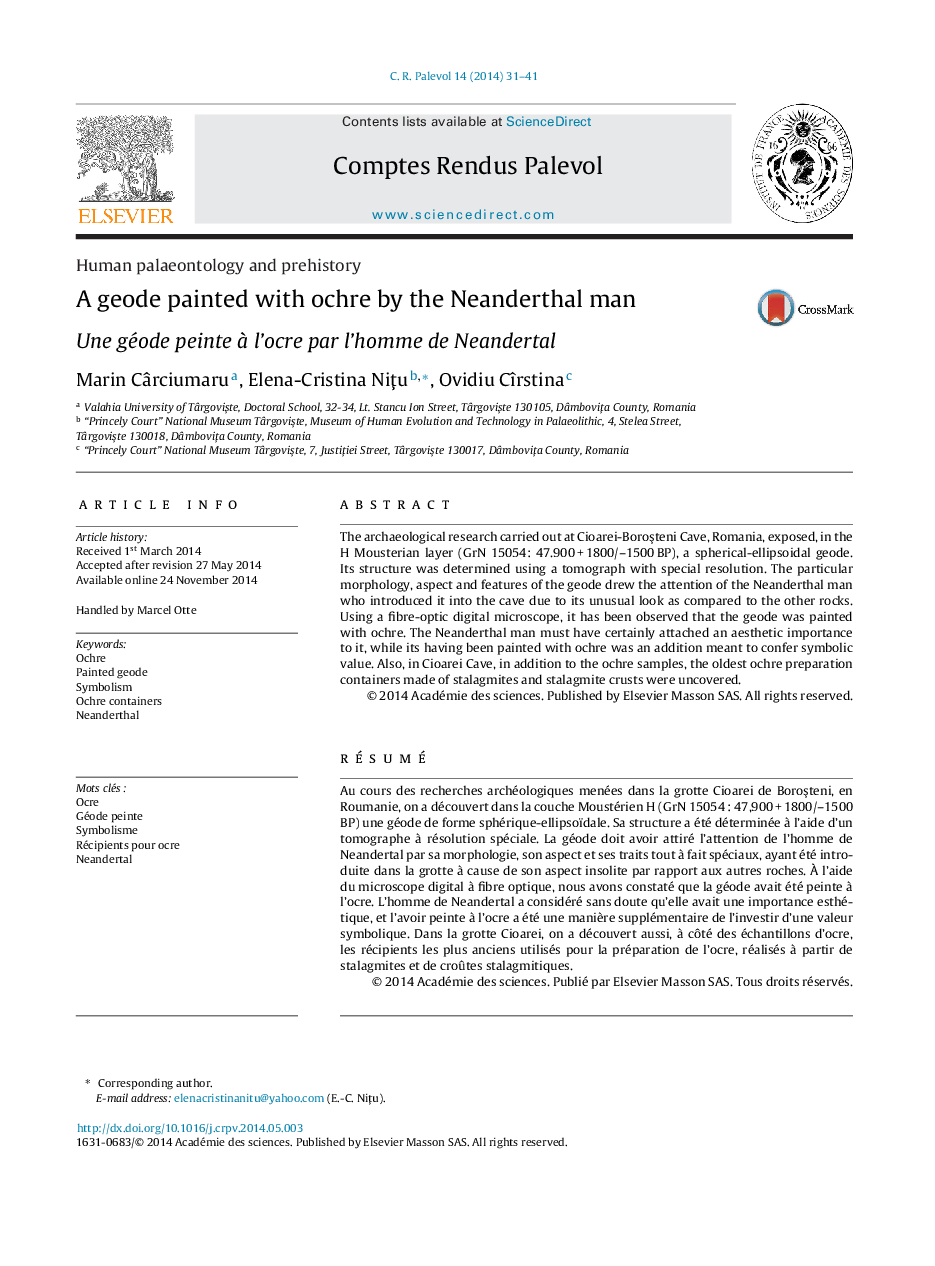| کد مقاله | کد نشریه | سال انتشار | مقاله انگلیسی | نسخه تمام متن |
|---|---|---|---|---|
| 4745793 | 1359782 | 2015 | 11 صفحه PDF | دانلود رایگان |
The archaeological research carried out at Cioarei-Boroşteni Cave, Romania, exposed, in the H Mousterian layer (GrN 15054: 47.900 + 1800/–1500 BP), a spherical-ellipsoidal geode. Its structure was determined using a tomograph with special resolution. The particular morphology, aspect and features of the geode drew the attention of the Neanderthal man who introduced it into the cave due to its unusual look as compared to the other rocks. Using a fibre-optic digital microscope, it has been observed that the geode was painted with ochre. The Neanderthal man must have certainly attached an aesthetic importance to it, while its having been painted with ochre was an addition meant to confer symbolic value. Also, in Cioarei Cave, in addition to the ochre samples, the oldest ochre preparation containers made of stalagmites and stalagmite crusts were uncovered.
RésuméAu cours des recherches archéologiques menées dans la grotte Cioarei de Boroşteni, en Roumanie, on a découvert dans la couche Moustérien H (GrN 15054 : 47,900 + 1800/–1500 BP) une géode de forme sphérique-ellipsoïdale. Sa structure a été déterminée à l’aide d’un tomographe à résolution spéciale. La géode doit avoir attiré l’attention de l’homme de Neandertal par sa morphologie, son aspect et ses traits tout à fait spéciaux, ayant été introduite dans la grotte à cause de son aspect insolite par rapport aux autres roches. À l’aide du microscope digital à fibre optique, nous avons constaté que la géode avait été peinte à l’ocre. L’homme de Neandertal a considéré sans doute qu’elle avait une importance esthétique, et l’avoir peinte à l’ocre a été une manière supplémentaire de l’investir d’une valeur symbolique. Dans la grotte Cioarei, on a découvert aussi, à côté des échantillons d’ocre, les récipients les plus anciens utilisés pour la préparation de l’ocre, réalisés à partir de stalagmites et de croûtes stalagmitiques.
Journal: Comptes Rendus Palevol - Volume 14, Issue 1, January 2015, Pages 31–41
